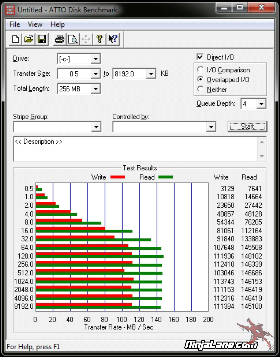After careful consideration I have decided to transfer all hardware review activities to a new domain. I purchased Hardwareasylum.com in 2012 and have been working hard to build a new and improved Ninjalane on that domain. If you are reading this you have reached one of the archived articles, news, projects and/or reviews that were left behind during the site migration.
Please update your bookmarks and be sure to visit the new and improved Ninjalane at Hardwareasylum.com
SilverStone HDDBoost Review
Author: Jim Manis
Published: Sunday, August 22, 2010
Performance Testing
Over the course of the testing I used the HDDBoost daily in my personal rig. I believe testing in a daily use machine is far more relevant than results obtained in a purpose built bench environment. The daily use machine has STEAM and MSN Messenger as well as Skype and other essential programs running like AV apps and the usual bloat most users will be running.
Our testing suite mainly consists of readily available benchmarks to make it easier to compare the results directly and gauge the benefit of the products we review.
Over the next couple of pages we will examine these and discuss the results.
Our testing suite mainly consists of readily available benchmarks to make it easier to compare the results directly and gauge the benefit of the products we review.
Over the next couple of pages we will examine these and discuss the results.
The system as it was tested
Intel i7 920 @ 2.66ghz (stock)
EVGA X58 SLI LE
6GB G.Skill Ripjaws @1333mhz 8-8-8-24 (board default)
2 XFX 5850s in Crossfire.
EVGA X58 SLI LE
6GB G.Skill Ripjaws @1333mhz 8-8-8-24 (board default)
2 XFX 5850s in Crossfire.
We start our testing with HD Tach RW 3.0.4.0 a simple yet complete benchmark suite which has become a staple in our lab. The results show a nice spike in the first 32GB section of the graph, unfortunately the 1TB size dwarfs it in comparison. As we all are aware the first few Gb of a drive are where the system files are stored and is the target of the HDDBoost and its Hybrid drive arrangement.
In the HD Tach shots above you can see the controller also helped stabilize the read speeds although there is some performance hit in these tests, it really is the first small section of the drive where the Operating system resides which will see the most use and is the most improved section.
ATTO is a great benchmark to evaluate drive performance and is also widely available for home use. We selected the default run and settings and as with all testing we ran it at least 3 times and use the best of the three. These and most tests ran within a tiny margin of error. SiSoft Sandra did not co-operate and we had to leave its results out of this review for that reason.
In the ATTO runs we saw a nice bump in read speeds with a small dip in write speeds, attributed to the controller overhead no doubt. The trade off is a fair one. In my opinion the read speed jump of ~20MB/s offsets the ~10MB drop in write speed.
In the ATTO runs we saw a nice bump in read speeds with a small dip in write speeds, attributed to the controller overhead no doubt. The trade off is a fair one. In my opinion the read speed jump of ~20MB/s offsets the ~10MB drop in write speed.





